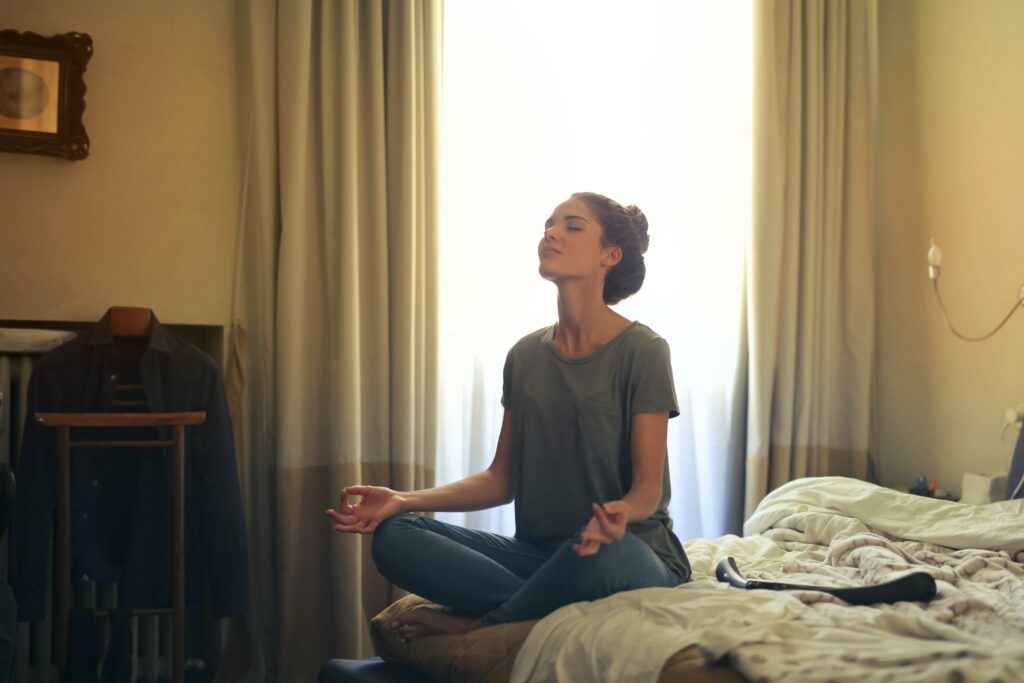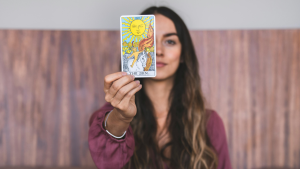We like to believe that meditation should be a part of everyone’s daily routine in order to find peace, balance, and clarity. However, finding a few moments of peace are more important than ever during these stressful and uncertain times. Why meditate? It’s an extremely effective technique that boasts both short-term and long-term benefits. It reduces stress and anxiety, enhances well-being, and can even improve sleep and overall health.
The practice has been around for centuries and while there are those who have devoted their entire lives to the practice, most individuals find a way to squeeze in meditation at home. “In mindfulness practice, we are learning how to return to, and remain in, the present moment—to anchor ourselves in the here and now on purpose, without judgement.” Here are some useful tips to help you get started so that you can find more peace in your daily life—even when things get back to normal.
Choose the Right Method for You
In order to stick to a meditation routine, you have to choose a method you enjoy or the experience is going to feel more a chore than an act of personal and spiritual wellness. There are copious apps and YouTube videos that showcase different methods including body scan, loving-kindness, breath awareness, gratitude, spiritual, mindfulness, transcendental, and zen meditations, among others. Yogis will be happy knowing that even kundalini yoga counts. Experiment with the various methods and find the best one(s) that work for you.
Decide on a Time and a Place
When it comes to the best time to meditate, the answer is whatever works best for you. Ideally, you want to stay consistent so perhaps you start or end your day with a session. You’ll also need to pick a quiet location within your house to designate as a meditation room. This space should be quiet and free from distractions. Consider enhancing your experience by burning a candle or incense. Most guided sessions already include soothing music, but if that’s not the case, take that measure into your own hands by putting on some spa-like tunes. You may be asking yourself “How long should I meditate?” Honestly, even five minutes a day can be effective. Most people generally practice for 5-10 minutes but don’t feel bad if you have to start with less before working your way up.
Find a Comfortable Position
While the lotus position is one of the most popular, you can even prop yourself up on a meditation cushion. If you have issues getting up off the floor (or it’s simply not comfortable for you), a chair or the couch are also acceptable options. The key is to find a position that makes it easy for you to sit up straight while keeping your neck and shoulders relaxed. You’ll likely find that it’s easier to make the mind-body connection when your eyes are closed, too.
Set an Intention
What’s your reasoning for wanting to meditate? Is it stress management? Clarity? Chronic pain? Sleep issues? Your intention will help you choose which aforementioned mediation method to choose.
Be Present
Being present is a must for any form of meditation so you’re going to have to learn how to turn off your mind and live in the exact moment. It’s understandable that this is not easy to do when you may be social distancing with a full house, but do your best and ask that others respect your moments of mediation. One of the best ways to stay focused is to concentrate on your breathing, which means being aware of each breath in and each breath out.
Need help with your meditation practice? Speak to one of our Keen advisors to help you on your path to a more stress-free lifestyle today.













